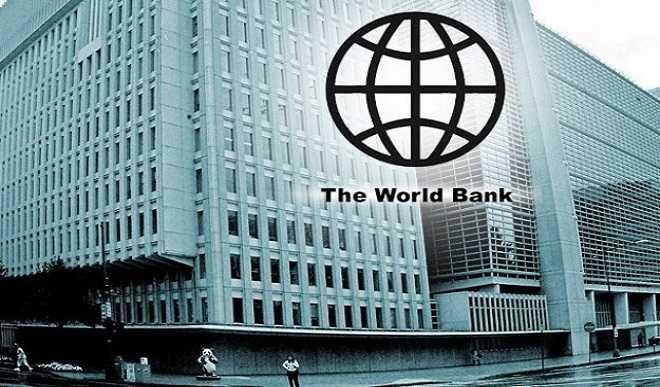A report by the World Bank group has categorised Nigeria among countries that did not show any progress in their economic performance between 1995 and 2018.
The report titled Africa’s Pulse which was released on Monday is an analysis of issues shaping Africa’s future.
The report list out 19 countries who were at the bottom to include: Angola, Burundi, Botswana, the Republic of Congo, the Comoros, Gabon, Equatorial Guinea, Liberia, Lesotho, Mauritania, Malawi, Namibia, Nigeria, Sierra Leone, Eswatini, Chad, South Africa, Zambia, and Zimbabwe.
According to the report: “These countries did not show any progress in their economic performance from 1995–2008 to 2015–18. For instance, their median economic growth rate decelerated, from 5.4 percent per year in 1995–2008 to 1.2 percent per year in 2015–2018.
“The population in this group accounts for 33 percent of the region’s total population (similar to the top and middle terciles) and produces almost 60 percent of the region’s total GDP (which is much greater than the top and middle terciles).
“This group includes the three largest countries in the region—Nigeria, South Africa, and Angola—and comprises many commodity exporters. The bottom tercile’s average GDP per capita is about US$2,696.”
Explaining the methodology used in the classification, the report stated that the taxonomy compares the average annual GDP growth rates during 1995–2008 and 2015–18 against predetermined thresholds.
The World Bank explained that these thresholds correspond to the bottom and top terciles of the annual average growth rates across 44 Sub-Saharan African countries between 1995 and 2008 (that is, 3.5 and 5.4 percent, respectively).
According to the World Bank, “If a country’s economic performance declined from 1995–2008 to 2015–18, the country is categorized in the bottom tercile, which includes “falling behind” and “slipping.
“If a country’s growth rate remained invariant over time, between 3.5 and 5.4 percent in both periods, it is categorized in the middle tercile (or “stuck in the middle”).
“If a country’s economic performance improved from 1995–2008 to 2015–18, with a growth of more than 5.4 percent per year, the country is categorized in the top tercile, which includes the “improved” and “established” groups.”
Growth in Nigeria is projected to rise from 1.9 percent in 2018 to 2.1 percent in 2019 (0.1 percentage point lower than last October’s forecast)
The report notes that this modest expansion reflects stagnant oil production, as regulatory uncertainty limits investment in the oil sector, while non-oil economic activity is held back by high inflation, policy distortions, and infrastructure constraints.
“Growth is projected to rise slightly to 2.2 percent in 2020 and reach 2.4 percent in 2021, as improving financing conditions help boost investment,” It added.
It further stated that although the manufacturing and non-manufacturing PMIs remained above the neutral 50-point mark—which denotes expansion—they fell further in February, due to weaker rises in output and new sales orders across firms.
“Household consumption in Nigeria has remained subdued, while multiple exchange rates, foreign exchange restrictions, low private sector credit growth, and infrastructure constraints have continued to weigh on private investment.
The report also notes that the external environment facing Sub-Saharan Africa continues to be challenging, as economic activity in advanced economies and emerging markets and developing economies (EMDEs) continues to decelerate, global industrial production declines, and global uncertainty related to trade disputes between the United States and China remains high.
It said: “Although most industrial commodity prices recovered in the first three months of 2019, following sharp declines in late 2018, and the prices of metals and agricultural commodities are expected to stabilize, the oil market outlook remains highly uncertain and dependent on whether the production cuts among the Organization of the Petroleum Exporting Countries and its partners will be extended.”
It also noted that low business confidence, partly driven by the slow pace of structural reforms, is holding back investment growth in some countries, as is the case of South Africa.
“Regulatory uncertainties are adversely affecting the oil sector in Angola and Nigeria. Significant heterogeneity persists in the region,” it stated.

 Join Daily Trust WhatsApp Community For Quick Access To News and Happenings Around You.
Join Daily Trust WhatsApp Community For Quick Access To News and Happenings Around You.


